What is A Mucus Plug?
Page Contents
- 1 What is A Mucus Plug?
- 2 Mucus Plug in Pregnancy
- 3 Mucus Plug and Labor
- 4 Losing Mucus Plug Early
- 5 What Does The Mucus Plug Look Like?
- 6 How Big Is A Mucus Plug?
- 7 Mucus Plug Color
- 8 Can Your Mucus Plug Be Clear?
- 9 Signs of Losing Mucus Plug
- 10 Is The Mucus Plug Always Bloody?
- 11 Losing Mucus Plug at 34 Weeks
- 12 Losing Mucus Plug at 35 Weeks
- 13 Losing Mucus Plug at 36 Weeks
- 14 Losing Mucus Plug at 37 Weeks
- 15 Losing Mucus Plug at 38 Weeks
- 16 Losing Mucus Plug at 40 Weeks of Pregnancy
- 17 Does Everyone Lose Their Mucus Plug?
- 18 Mucus Plug in Lungs
- 19 Mucus Plug in Throat
- 20 Mucus Plug Pictures
Pregnant women often develop a protective mass of mucus in the cervical canal. This is commonly referred to as a Mucus Plug. It is also popularly known as Cervical Mucus Plug.
Mucus Plug in Pregnancy
Mucus Plug develops as a protective sheath for the uterus against invading bacteria that may harm the fetus. The plug arises as one of the numerous natural protective measures of the human body to protect a maturing fetus. It is an inbuilt protection of the body that arises during pregnancy to keep bacteria off the uterus.
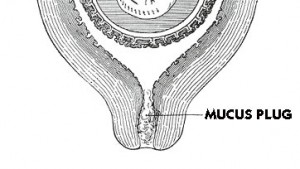
Picture 1 – Mucus Plug
Source – mucusplug.net
Most pregnant women lose their mucus plug before labor, close to the end of their pregnancy. Passing the plug is often a prelude to labor. However, it is not a sure indication of labor. Some experts say that losing mucus plug is likely to occur sometime during the 36th week of maternity, even if there is no chance of delivery for some more weeks.
Mucus Plug and Labor
Long back, losing your mucus plug would have been regarded as a sure sign of an impending labor. However, it is not regarded as a definite indication of labor nowadays. Even after a pregnant woman has lost her plug, the date of delivery may be far away by weeks or months.
Losing Mucus Plug Early
In most cases, loss of mucus plugs can be natural or after a cervical examination. It does not give a proper idea of when labor may start. If you are going close to full term and lose your plug, it may not be necessary to call a doctor. However, if you are pregnant for less than nine months or you have had a premature labor in the past, you should immediately get in touch with your doctor. If loss of your mucus plug is associated with cramping or bright red bleeding, it could be suggestive of placental abruption or placenta previa which require immediate medical care.
What Does The Mucus Plug Look Like?
There have been many reports that it looks quite similar to the mucus in the nose that is seen in flu sufferers.
According to some health care experts, the appearance of this plug can vary from one woman to another. It may also differ from one pregnancy to another in the same woman.
How Big Is A Mucus Plug?
It is very small in size so as not to be clearly noticeable in vaginal discharge. It is approximately the size of a quarter.
Mucus Plug Color
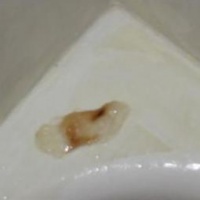
Picture 2 – Mucus Plug Color
Source – i-am-pregnant
It may have a pink, red or brown tinge to it. The plug may appear clear in some women, although it is common to find the plug brown, pink or red in color due to the presence of blood. Due to this reason, it is commonly known as the ‘bloody show’.
Can Your Mucus Plug Be Clear?
In some women, this plug may be clear in appearance. Some would-be mothers have a pearly white discharge while some have a mucus discharge that is very slightly yellowish. But there may be white discharge of mucus, the whiteness being similar to the albumen of an egg.
Signs of Losing Mucus Plug
This plug may come out when the cervix starts to become thin and gradually opens up. Pregnant women may notice discharge of stringy or thick mucus. It is generally brown in color. In some cases, it may be tinted with blood.
There can be normal vaginal discharge even during usual cases of pregnancy. Usually, normal vaginal discharge is thin. However, the discharge may get thicker in case of a loss of this plug. A thick vaginal discharge can be an indication of loss of this plug. In such cases, the color of the discharge is also darker than usual. It may also contain blood unlike in normal cases. The nearer you are to the delivery date, the greater is your chance of having certain amount of blood surrounding the external layers of the plug. If you are closer to your delivery date, loss of the plug may be a cause of vaginal bleeding.
Some women discover a discharge of clear fluid rather than sticky mucus. This clear liquid may be nothing but amniotic fluid. If you suspect yourself to be leaking amniotic fluid, immediately get in touch with your health care provider.
It is important to know that you may not lose all of this protective covering all at once. Your body may eliminate it from the system in parts. You have to be patient to allow that to happen. Some women may lose the entire plug during a single discharge. There may be a gradual dissipation of the plug in others which may not be apparent at all.
Many women may not be aware of the expulsion of their mucus plug due to increase in vaginal discharge during pregnancy. Some women have a partial or total loss of their mucus plug days or weeks or even hours prior to having labor.
Is The Mucus Plug Always Bloody?
Bleeding is common along with loss of this plug. Unusual vaginal bleeding is common near the close of pregnancy. However, abnormal vaginal bleeding may be an indication of acute health conditions that may affect the health of both mother and infant. Abnormal discharge or unusual vaginal bleeding in the second or the initial stages of the third trimester may be a cause of concern and should immediately be reported to a doctor.
Losing Mucus Plug at 34 Weeks
Losing the plug in the 34th week of pregnancy is considered to be quite early. Many women find the loss of plug quite disturbing in 34th week. However, this is often harmless as women are found to give birth to healthy babies with good weight and without any structural abnormalities.
Losing Mucus Plug at 35 Weeks
Many women are found to be passing the mucus plug in the 35th week of pregnancy. This is often preceded by light cramps and bleeding which may be an indication that the women are soon to enter labor. However, the plug may be lost in parts in the form of jelly-like vaginal discharge.
Losing Mucus Plug at 36 Weeks
Women who lose their plug in the 36th week of pregnancy experience lots of pelvic pressure. Some women lose the plug entirely at one go whereas some others lose it bit by bit through three or more discharges.
Losing Mucus Plug at 37 Weeks
Losing this plug at 37 weeks is often found to be a sign of impending labor and is regarded as quite normal. It may be an indication of further dilation of the uterine wall in preparation for delivery. Pregnant women may also go through Braxton Hicks contractions at this period.
Losing Mucus Plug at 38 Weeks
When women lose their mucus plug at the 38th week of pregnancy, it indicates that the labor may occur at any time in the near future. In case of pain in the lower back associated with strong and regular contractions, it is better to go to hospital. Delivery may occur at any time.
Losing Mucus Plug at 40 Weeks of Pregnancy
Some women lose their mucus plug during the 40th week of their pregnancy. This is often associated with cramping. It is a sign of imminent labor.
Does Everyone Lose Their Mucus Plug?
The loss of this plug is not believed to occur in every woman who is pregnant. It is believed that some women lose their plugs only when their water breaks and they are actually in a labor. A few women do not notice loss of plug even after breaking of water. However, doctors believe that all women lose this thing at some point or other during their pregnancy, even though it might not be noticeable.
Mucus Plug in Lungs
Sometimes, excessive mucus can result in formation of mucus plugs in the lungs. This can arise due to a number of pulmonary conditions as well as diseases like
- Allergic Bronchopulmonary Aspergillosis
- Bronchiectasis
- Bronchial asthma
- Cystic fibrosis
Presence of plugs in the lungs can be detected by tests like Fiber optic Bronchoscopy and Radiography. The problem can be cured with the aid of hydration, corticosteroids, chest physiotherapy and antibiotics. In some cases, Bronchoscopy may be needed to achieve lung expansion and curing this condition.
Mucus Plug in Throat
In some individuals, excessive mucus in the nose may cause it to run down the back of the throat and lead to a condition that is known as Postnasal Drip. Drainage of excess mucus may lead to the formation of a plug that may obstruct the Eustachian tube between the ear and the nose. This leads to problems like pain and ear infection. This can be treated with the aid of antihistamine medications. The condition can also be resolved by the use of over-the-counter nasal sprays, drinking excess fluids or by increasing the humidity of the room with a humidifier.
Antibiotic medications are not always helpful in removing excess mucus. If nasal discharge is yellow or green in color, antibiotic medicines may not be required at all.
Mucus Plug Pictures
Here are some Mucus Plug images that will give you an idea about the physical appearance of this substance. You may use these Mucus Plug diagrams for reference.
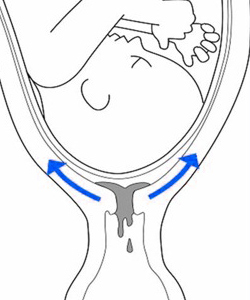
Picture 3 – Mucus Plug Photo
Source – babylifetime
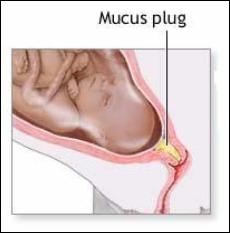
Picture 4 – Mucus Plug Image
Source – i-am-pregnant
References:
http://www.nejm.org/doi/pdf/10.1056/NEJMicm020362
http://www.nlm.nih.gov/medlineplus/ency/article/003051.htm
http://www.babyzone.com/pregnancy/labor_birth/article/mucus-plug
http://www.babycenter.com/0_signs-of-labor_181.bc

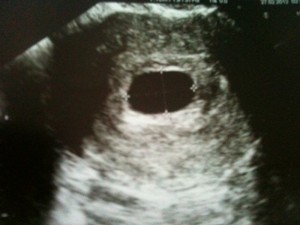
I’m 37 weeks of pregnancy. I have bleeding and no cramping. Is it mucus plug? how long does mucus plug take before labor?
Im 38 weeks and wondering whats the cloudy stuff in my urine. No uti i got checked 4 that also im pooping more no constipation. There was a lil blood in some of my urine an 1 time on tissue
I’m 21 weeks pregnant I discharge and it was green and slimmy what does this mean? Kinda like a mucus plug but no boood? Can someone please tell me what this is and if it’s normal?